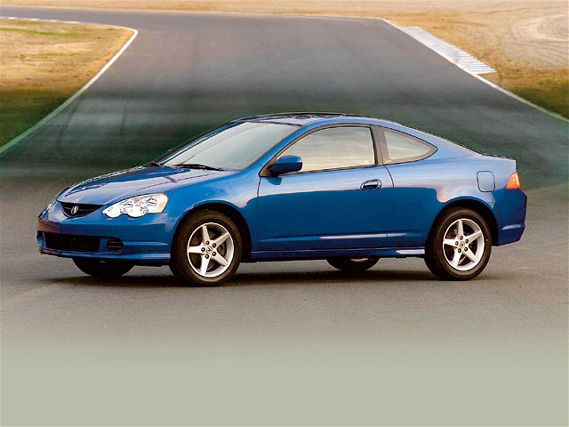 | Bottle, Boost, and Brains
| Bottle, Boost, and Brains
Hondata gives us a preview of its new programmable ECU for the K20A by tuning it for a squeezed and blown RSX-S. Bob Hernandez is there for all the power-producing drama.
These are great times for the Honda tuner. Never before have so many avenues been open for the willing to wring every potential ounce of power from a four-cylinder engine. Turbocharging and supercharging are as popular as they ever were, and the science of naturally aspirating is becoming more refined with each passing week. Even the use of nitrous oxide has become fashionable. And with the introduction of the K-series motor, the opportunities have only multiplied exponentially.
The folks at Hondata have long recognized this and in fact have come to count on it. The company makes its money modifying standard Honda ECUs, adding features and expanding the capabilities of the factory computer to accommodate such things as a blower or aftermarket engine bolt-ons.
Recently, however, the stakes have been raised as several companies have begun to market their own user-programmable systems that essentially plug right into the factory ECU harness. With these computers a tuner can tweak for pretty much any combination of engine control, power adders and auxiliary devices and precisely deliver the correct amounts of fuel and timing for whatever operating condition he can think of.
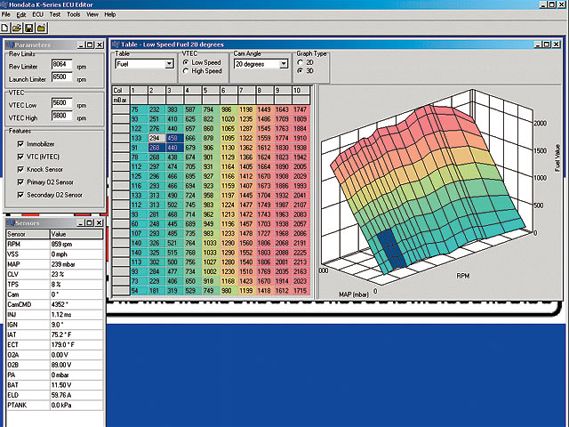 | Bottle, Boost, and Brains
| Bottle, Boost, and Brains
In light of this development, Hondata has developed its own programmable computer for the Civic Si (K20A3) and RSX Type-S (K20A2) engines, which should be out by the time you read this story. Fuel, ignition, cam angle and knock sensor tables are all adjustable and multiple fuel and ignition tables come with the system for different intake cam angles.
The ECU also offers expanded tables for up to 10 psi of boost and nitrous management that includes control over activation, solenoid output, and fuel/ignition parameters. As the ECU activates nitrous, it enriches fuel and retards timing accordingly. Plus it logs data from 40 major sensors and is compatible with OBD-II diagnostic tools and smog station scan tools.
The Hondata ECU mounts in the stock location, plugs into the OE wiring harness, and utilizes a USB connection to interface with a laptop or other PC running the computer's software package.
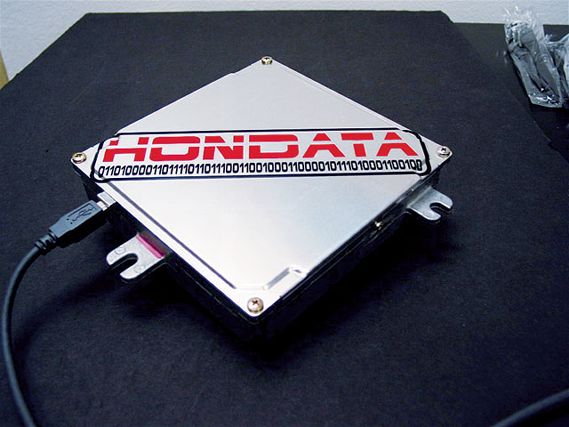 | Bottle, Boost, and Brains
| Bottle, Boost, and Brains
Hondata co-founder Doug MacMillan wanted us to see firsthand the capabilities of the company's latest offering, and we were only too happy to see what all the hype was about. The test subject was MacMillan's own RSX-S, the K20 already outfitted with a Jackson Racing supercharger producing 5 psi of boost. The Acura motor was also rigged with a Toda header, DC Sports cat-back exhaust and an improvised cold-air intake. The intake supplanted a short-ram version that's normally in the engine compartment; according to MacMillan, he's found that the difference in boost levels between a cold-air and short-ram intakes can be as much as 0.3 to 0.4 psi.
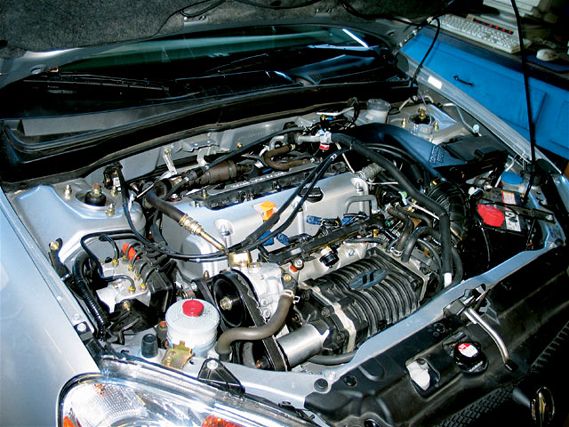 | Bottle, Boost, and Brains
| Bottle, Boost, and Brains
MacMillan's goal was to introduce nitrous into the combo and get the wheel horsepower above 300, but the process would also help research proper timing for the various shots of nitrous. As MacMillan saw it, the N2O would produce power in two ways: first, by the conventional burn method, which breaks up the nitrous oxide into nitrogen and oxygen and provides more power by promoting a more complete fuel burn. The other way N2O would help create power is by serving as a sort of nitrous intercooler for the supercharger, i.e. the nitrous, sprayed into the blower, cools the charge and makes it denser, effectively increasing boost levels.
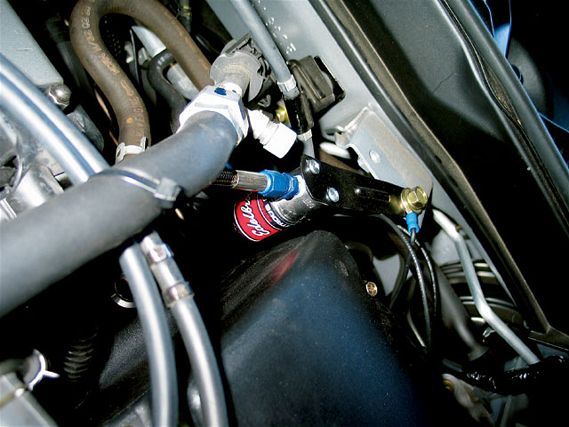 | Bottle, Boost, and Brains
| Bottle, Boost, and Brains
A wet nitrous kit was purchased from Edelbrock but was installed as a dry kit, primarily because the normal wet kit uses two solenoids, which complicates installation and tuning the ECU. In addition, a typical wet kit adds nitrous and fuel ahead of the throttle body, which makes the upper intake wet with fuel. It goes without saying that these systems are best used with intakes designed for wet flow.
The nozzle installation is fairly simple, tapped into the intake plumbing ahead of the throttle body. Typically one opening is for an N2O line and the other is for gasoline, but since this is a dry setup only the laughing gas hose is connected. Ideally the other input should have a cap. Initial jetting was for a 24-shot, and final testing was done with a jet sized for a 70-shot.
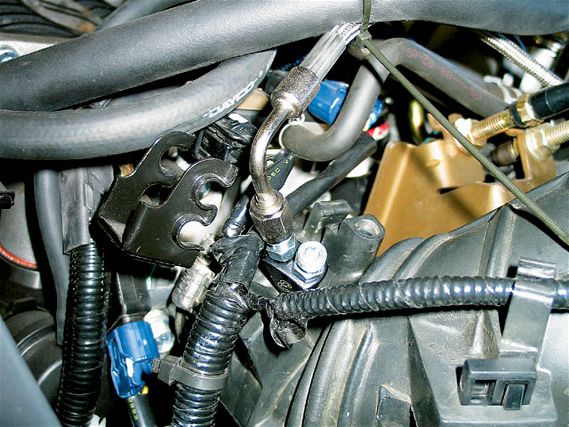 | Bottle, Boost, and Brains
| Bottle, Boost, and Brains
Installing the braided nitrous line was also relatively easy. The hose was run through the cabin floor along panels, up the back of the glove box and through a fat grommet used for the engine harness.
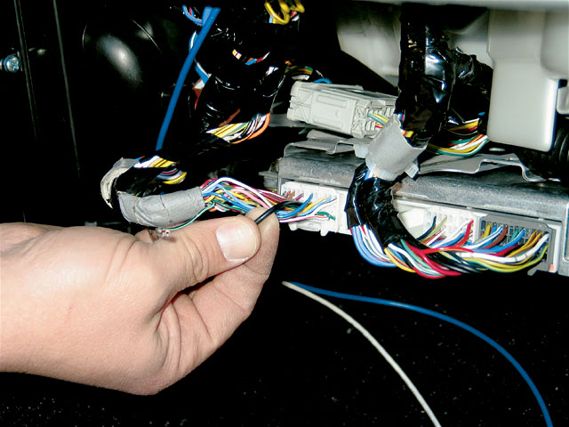 | Bottle, Boost, and Brains
| Bottle, Boost, and Brains
Wiring the dry configuration into the ECU is a straightforward proposition. For starters the black wire coming from the nitrous arming switch is routed to the power steering pump connector, which happens to be a spare input into the programmable ECU. Obviously this tells the computer whether the N2O is armed or not.
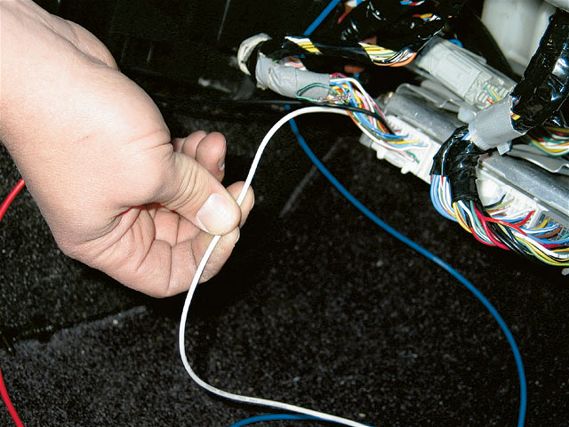 | Bottle, Boost, and Brains
| Bottle, Boost, and Brains
The white wire runs from the ECU to the relay that came with the nitrous kit. Edelbrock indicates that it normally drives a purge control valve for emissions, but in this instance it will serve as a trigger that activates the relay once all the pre-set conditions are met and the nitrous is armed.
Finally, the red wire runs from a 12-volt accessory power source behind the dash to the relay. The blue wire runs from the relay to the engine compartment and activates the nitrous solenoid.
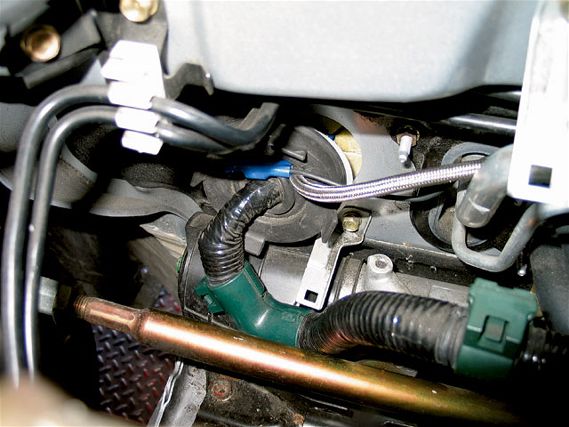 | Bottle, Boost, and Brains
| Bottle, Boost, and Brains
One issue that MacMillan encountered was with the nitrous tank. Ostensibly, the more runs that are done, the colder the bottle temperature becomes. The colder the temperature, the more pressure drops and ultimately less nitrous ends up getting sprayed into the mix. Ideally, the bottle should have a heater with a thermostat to keep bottle temperature consistent; as we didn't have one, though, MacMillan estimates that the true amount of nitrous delivered was more like a 40- to 45-shot (instead of a 7-shot).
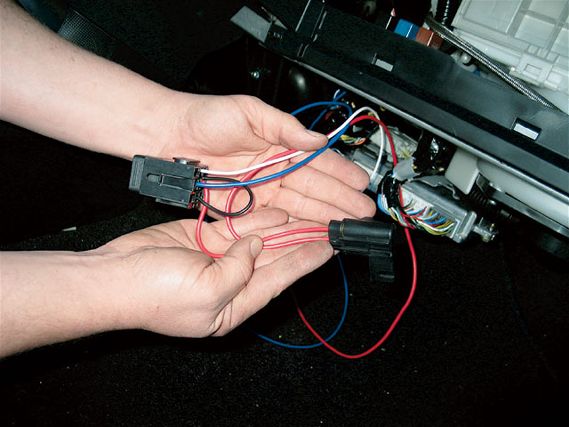 | Bottle, Boost, and Brains
| Bottle, Boost, and Brains
Midway through testing, MacMillan upped boost from 5 to 7 psi by changing out the pulley that drives the blower with a smaller 3.4-inch version. Again he points out that as boost pressure increases, air temperature gets hotter because the air is becoming more compressed; therefore nitrous should be quite effective as a cooling mechanism.
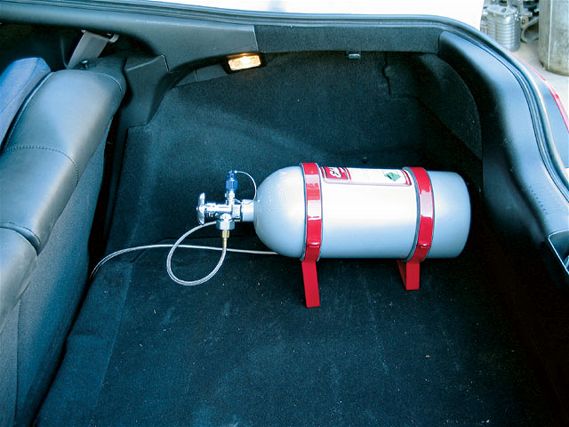 | Bottle, Boost, and Brains
| Bottle, Boost, and Brains
Testing began at MD Automotive in Westminster, Calif., on its DynoJet dynamometer, and concluded on the chassis dyno at Church Automotive Testing in Torrance the following day.
As indicated earlier, the software for the ECU comes with a nitrous control panel. The panel triggers the N2O only when a series of conditions are met, not just when the engine is at WOT, which is usually how it's done. This minimizes the chances of engine components failing. The parameters include minimum rpm, engine load (as it relates to the normal atmospheric pressure of 14.7 psi), throttle angle and vehicle speed. This last qualifier is used so the nitrous can be programmed to come on only in third gear or higher, avoiding the dreaded wheel spin that comes with too early a squeeze.
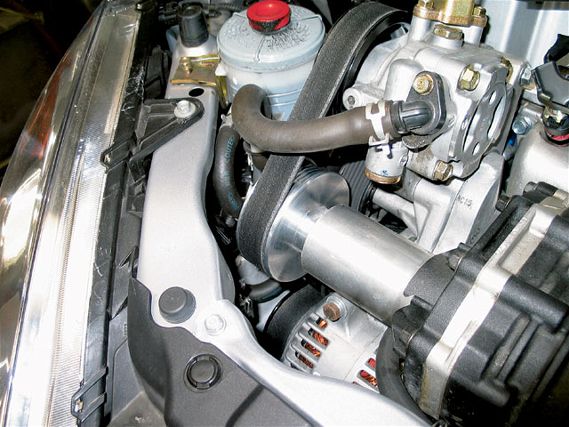 | Bottle, Boost, and Brains
| Bottle, Boost, and Brains
Additionally, maximums need to be specified for all of these parameters. The last thing you want is to hit redline on the laughing gas; luckily it can be switched off a few rpm before that.
It's important to note that while the stock fuel injectors are suitable for up to a 40-shot of N2O on an NA motor, anything more will need at least a 440cc injector. MacMillan went with the 550cc injectors, which were initially thought to have plenty of fuel capacity for both the nitrous and supercharger.
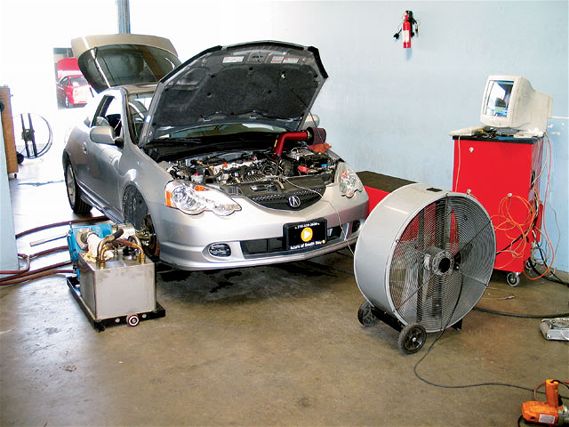 | Bottle, Boost, and Brains
| Bottle, Boost, and Brains
The dyno graph certainly gives part of the story; by the end of testing MacMillan had gotten the RSX-S up to 318 hp and 230 lb-ft of torque, pretty much hitting the goal he had established at the outset. But he also gleaned a couple of other nuggets of information from the sessions.
With the 550cc injectors, a 45-shot of N2O, one degree of timing advance, and 6 to 7 psi of boost, the injectors were at about 95 percent of capacity--in short, they couldn't deliver much more fuel than they were already giving. Furthermore the tests indicate the system was close to the limits of the factory fuel pump. In order to increase the amount of nitrous used, MacMillan recommends bigger injectors, a higher redline (more revs equal more boost) and a bigger pump.
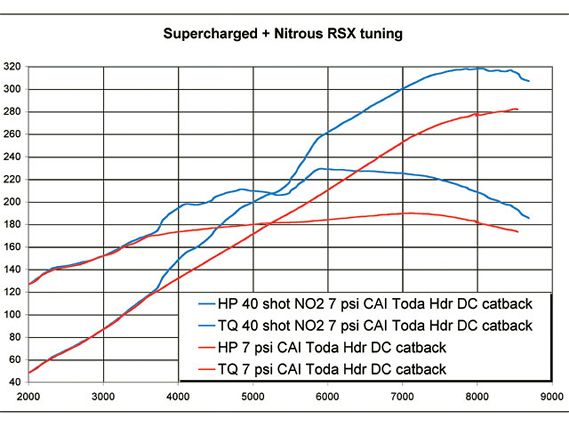 | Bottle, Boost, and Brains
| Bottle, Boost, and Brains
Finally, it appears the supercharger does serve as a suitable nitrous mixer, distributing the mix rather nicely, although 7 pounds of boost alone without charge cooling is probably not enough to achieve 300 hp. MacMillan suggests increasing boost to 10 psi if you're running without the laughing gas.
